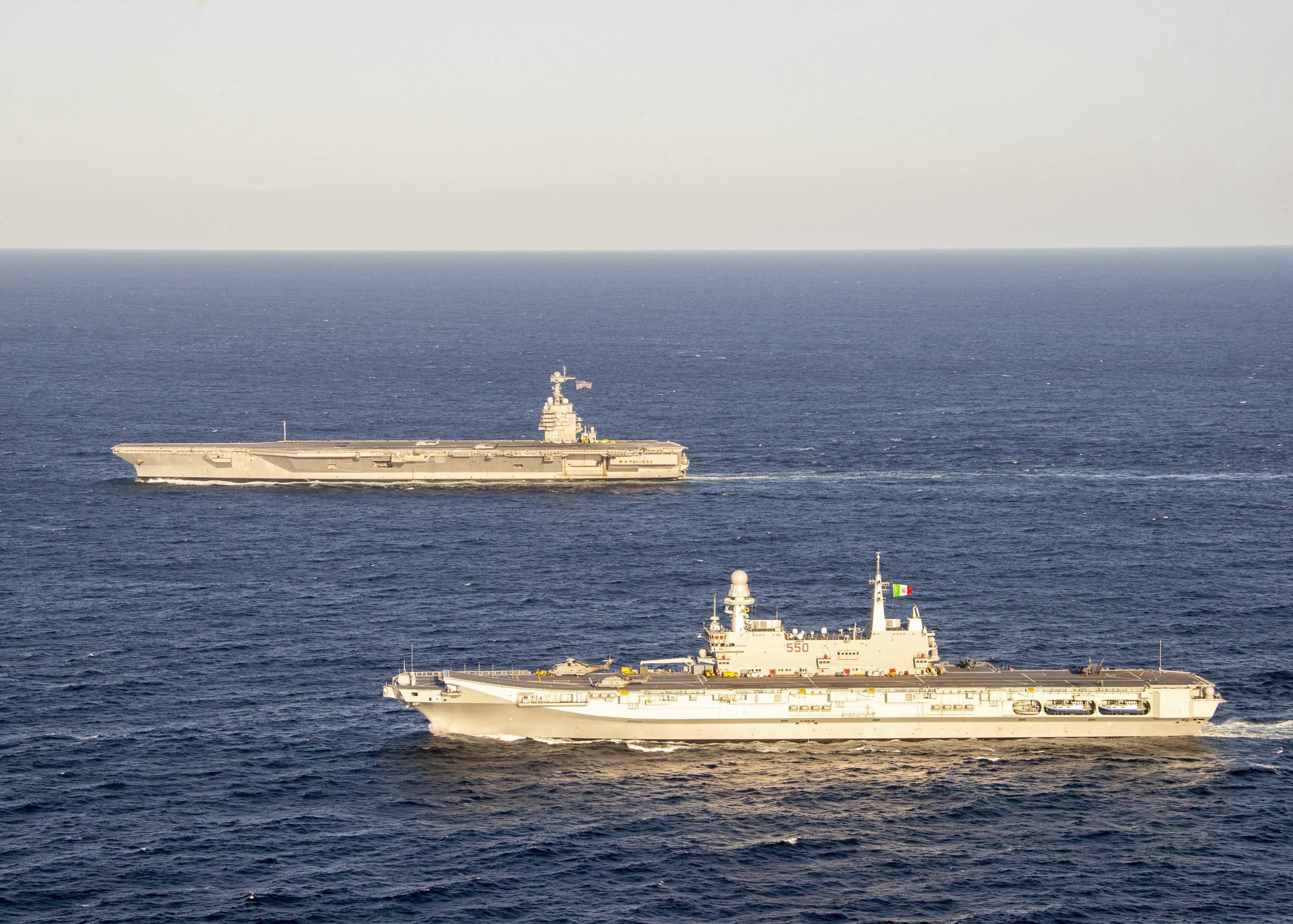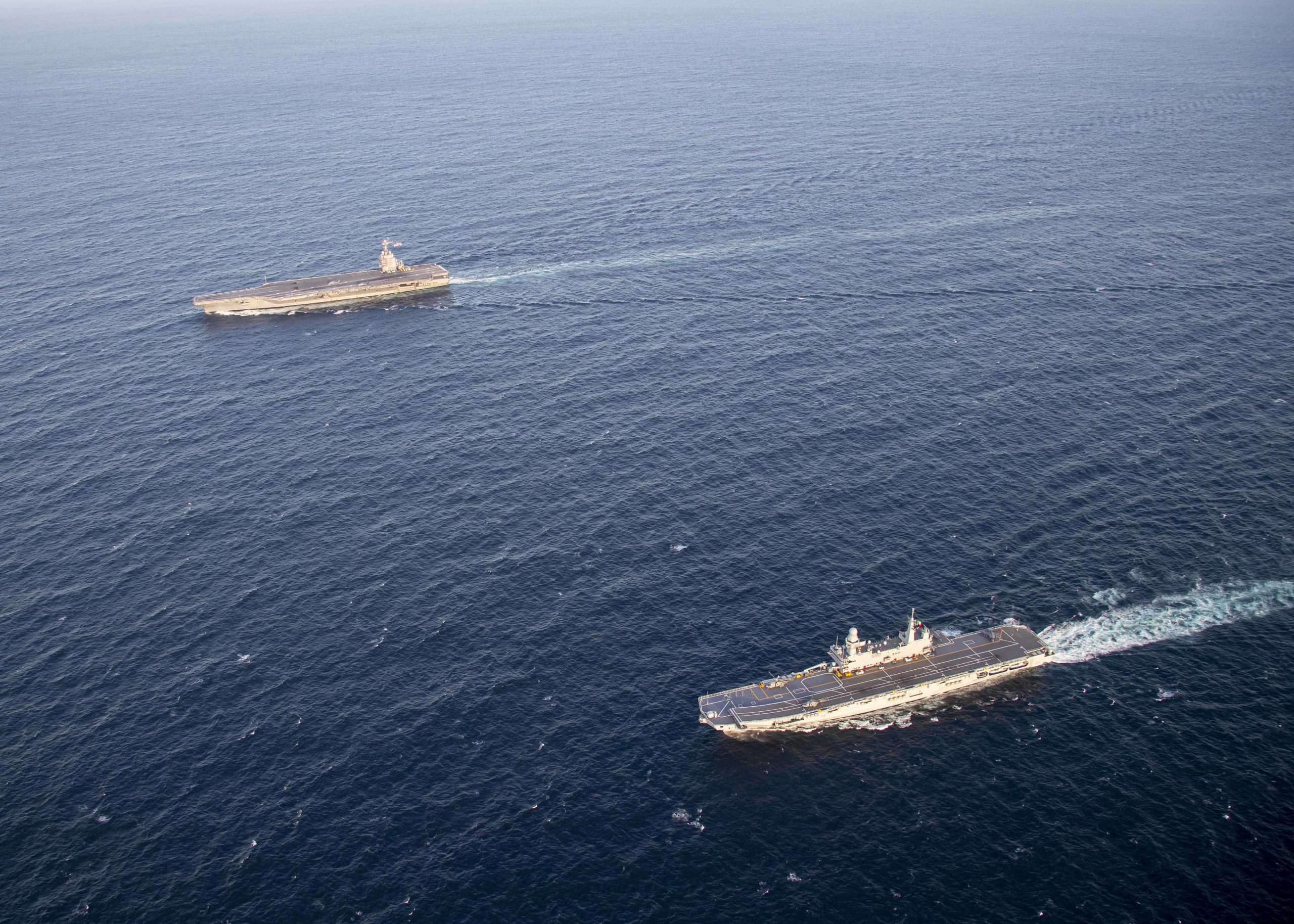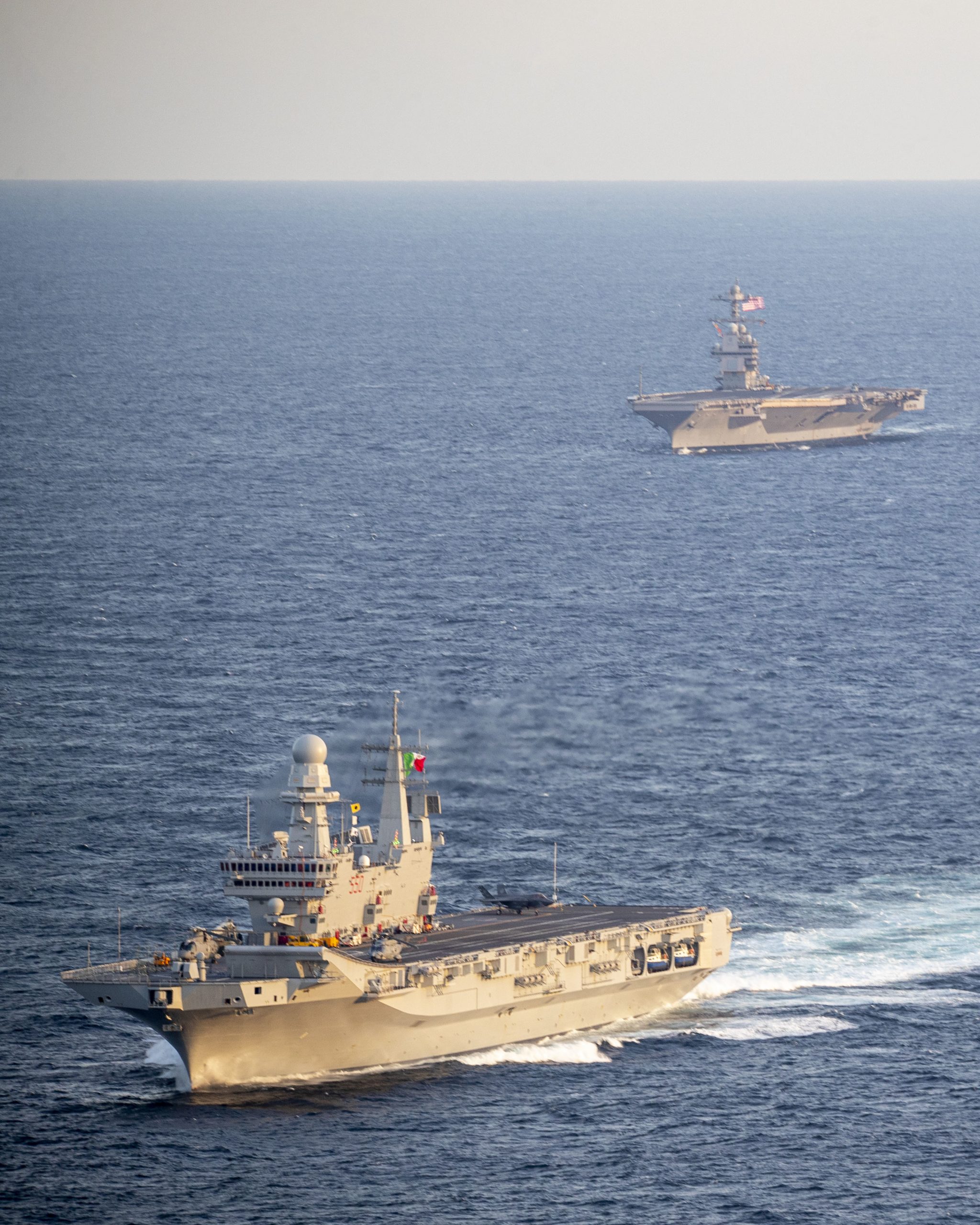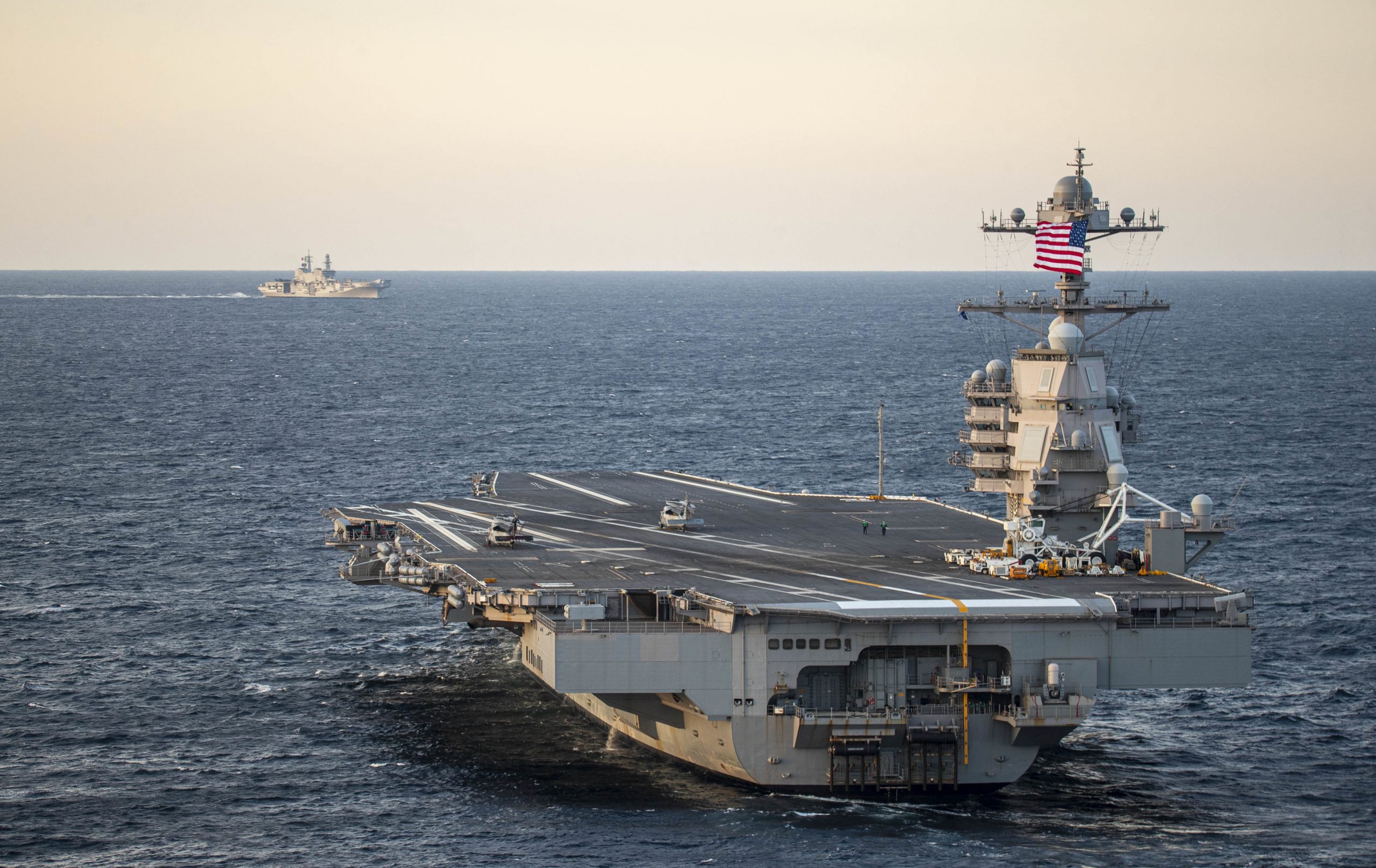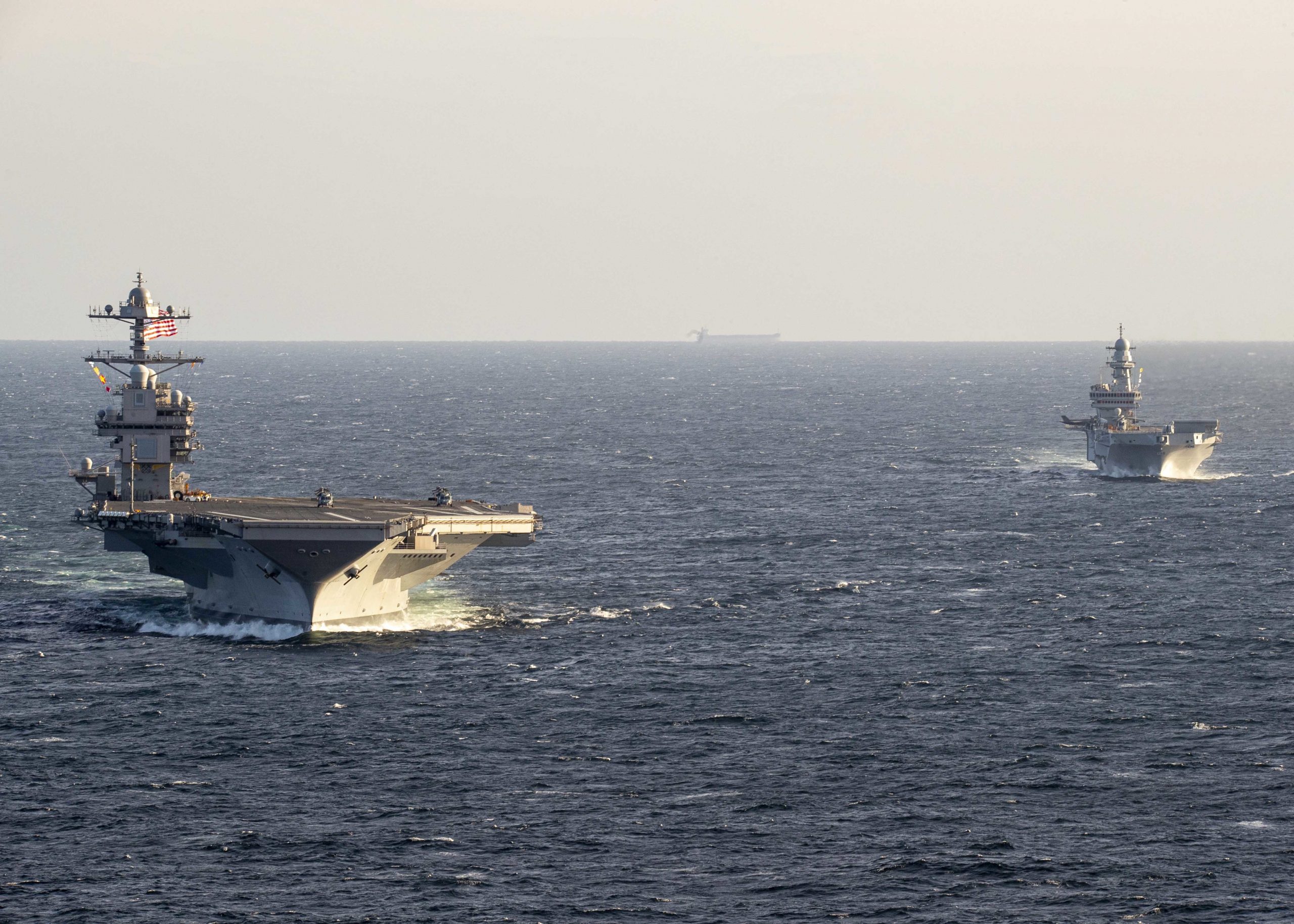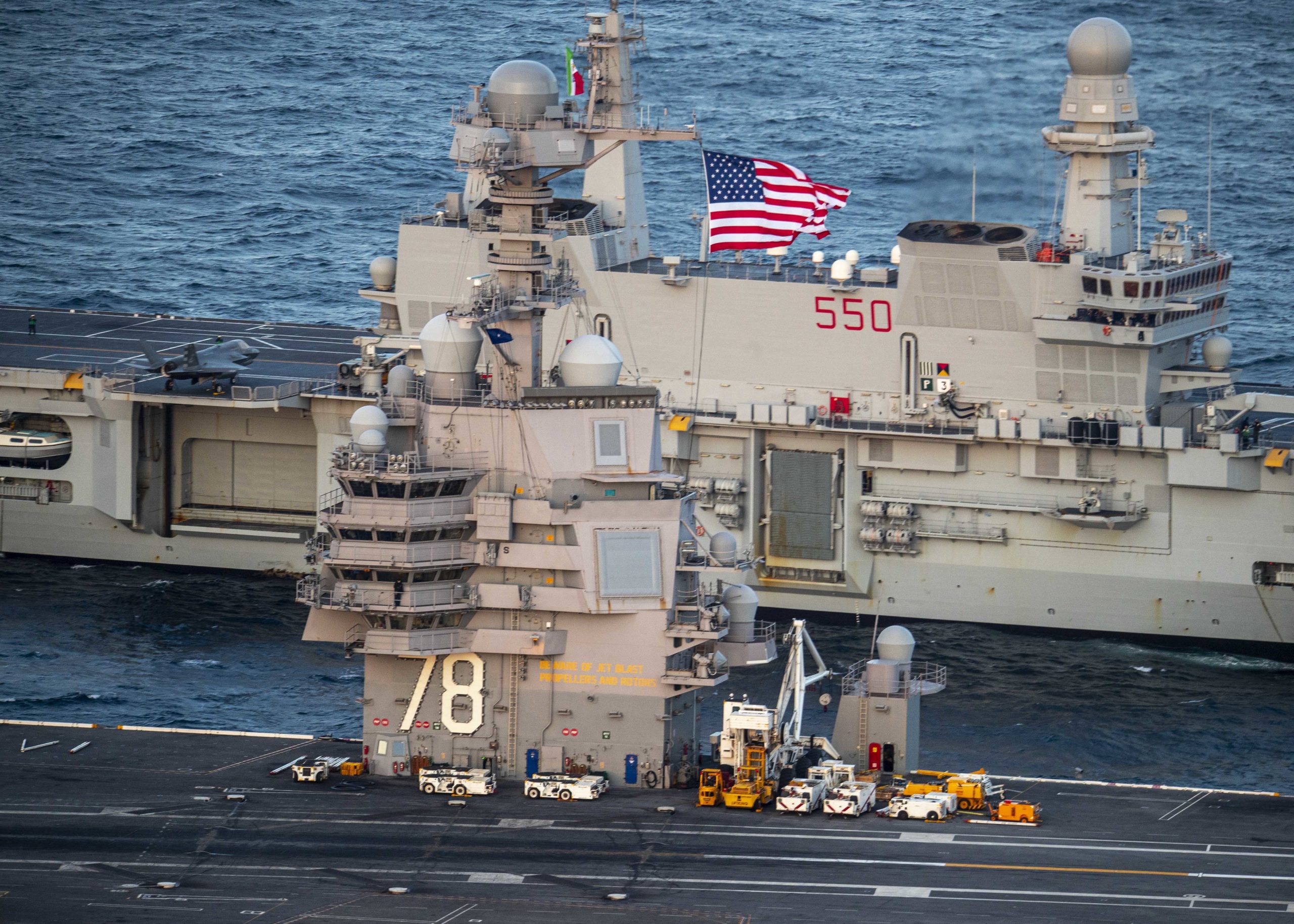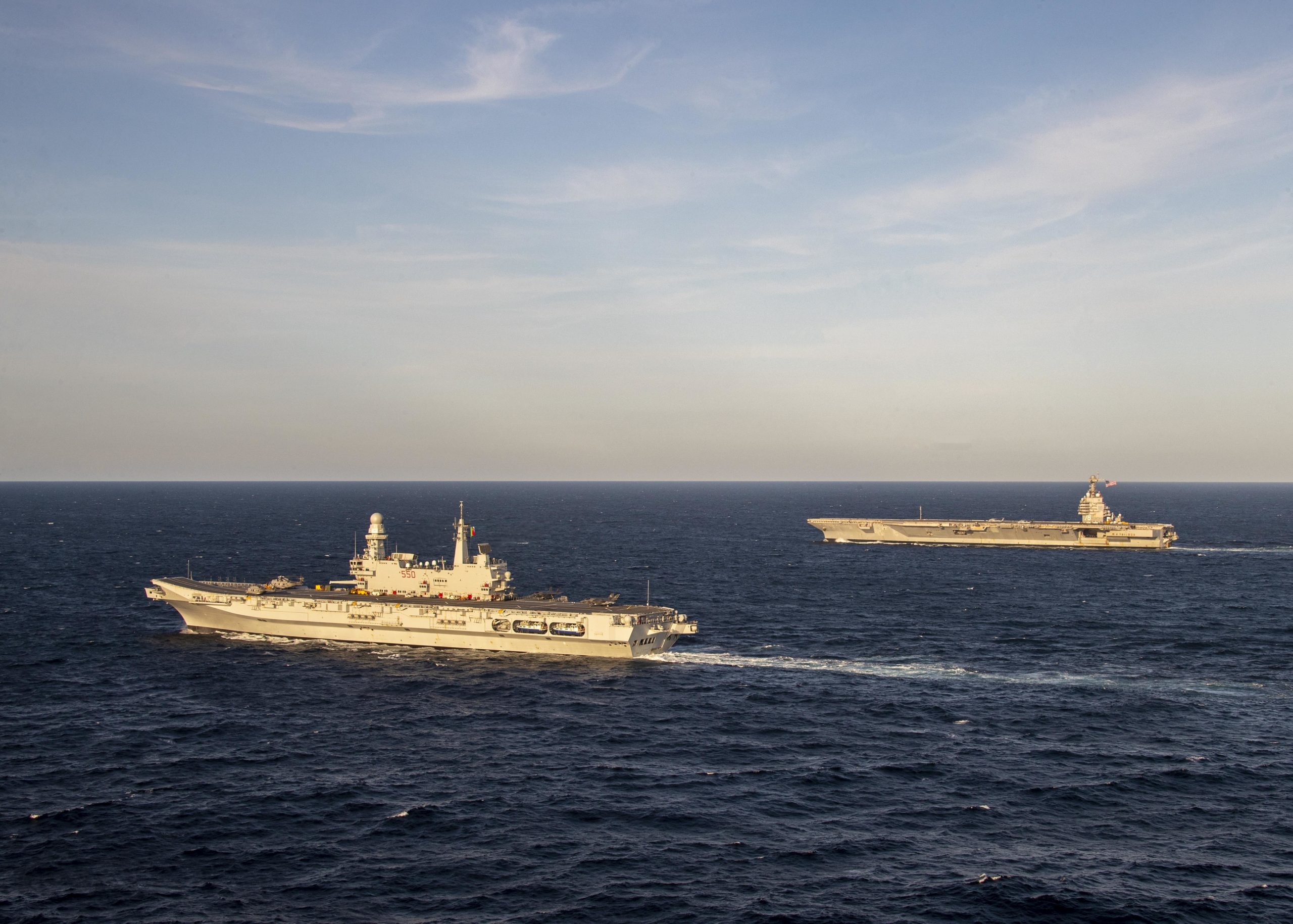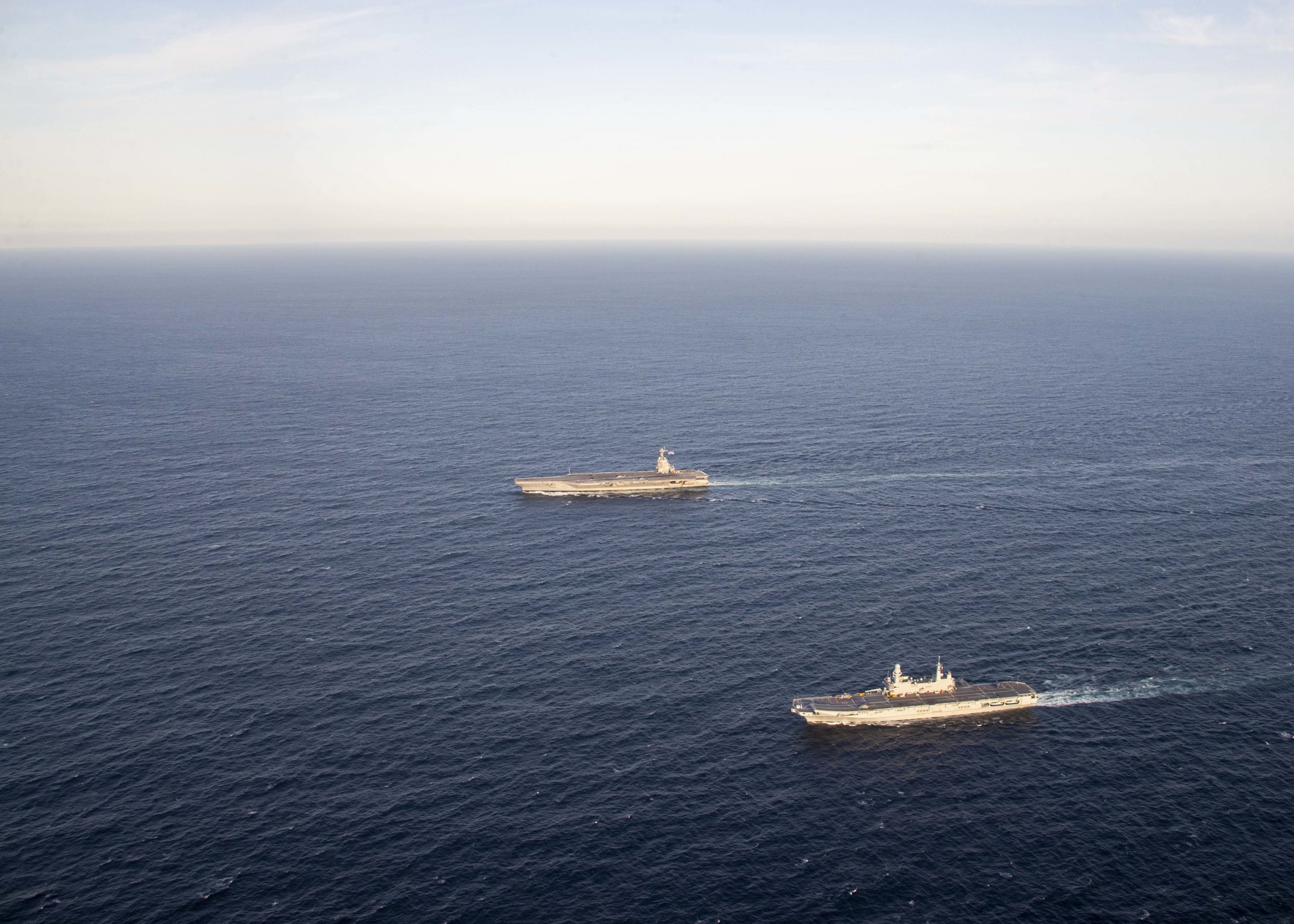By Robbin Laird
Recently, the latest large deck carrier was at sea with the ITS Cavour. One could describe this as a large deck carrier at sea with a smaller carrier but that would really miss the point.
From the standpoint of what we are seeing with the launch of 2nd Fleet and JFC Norfolk, the U.S. Navy and the relevant NATO nations are reworking how to shape a distributed integrated force.
And having a significantly redesigned large deck carrier on the U.S. side configured to operate with the fleet differently, and with a small deck carrier operating F-35s off of its deck, these two platforms together deliver new capabilities to the 360 degree combat force.
As I wrote on October 15, 2020:
Although the USS Ford draws on the generations of experience operating large deck carriers, the USS Ford is no more a Nimitz class replacement than the F-35 is a replacement for legacy aircraft.
The ship has a number of capabilities which allow it to have substantial increases in sortie generation rates which allows the ship to deliver mix and match force packages into the expanded battlespace.
And these capabilities will work differently with the fleet, understood more broadly, as inclusive not only of the Navy but with the US Air Force and Marine Corps as well.
The airwing of the future understood as the integratable air wing, new approaches to working fleet wide combat integrability, enhanced capabilities to work with the various elements of the joint and coalition forces more effectively, reworking blue water expeditionary operations, and shaping kill web dynamic targeting options, all provide the strategic context within which the USS Ford will operate.
In other words, it is not just a new ship; it is a new blue water capability empowering maritime and air power to operate in ways symmetrical with the challenges of full spectrum crisis management.
As such, the ship will benefit from the various force structure changes which the United States and its allies are generating but it will also drive further changes in concepts of operations and capabilities as well.
In many ways, it is an untold story.
With the ITS Cavour switching from Harriers to F-35s, its contribution to the coalition force ramps up exponentially. The F-35s operating off of the Cavour can integrate with U.S. and allied forces also flying the F-35.
And with the F-35 global enterprise, the global reach of information surveillance and reconnaissance is significant along with the ability to shape a common operating picture for the kind of time urgent decision making needed for full spectrum crisis management.
As we wrote in 2013 about the coming of the F-35 to the ITS Cavour:
A ship like the Cavour, operating F-35Bs, can form a centerpiece of a maritime operational force or provide overwatch and strike support for an allied coalition force, seen as a distributed force.
Given Italy’s key location in the Mediterranean, its land and sea-based assets can be blended into a more coherent capability to protect Italian interests by more effectively combining its air assets around the F-35.
For example, if one looks at the Mediterranean and considers simply the deployment of three F-35B carriers, the Cavour, the new Queen Elizabeth class or the USS America class, the Mediterranean can be considered under the reach of the air fleet, but one clearly considered not as an end in itself but as integral part of joint and coalition operations.
In the graphic below, a notional intersection of F-35Bs operating off of an Italian carrier with that of the UK with that of the USN-USMC Amphibious Ready Group in the Mediterranean is represented:
The fleet operates by the machines within the plane trading data with one another so that the circles represent a common operating picture over the reach of the multiple flying assets. The COP provides a setting within which the pilots can operate to shape situational decision making appropriate to the mission.
And the circles are actually 360 degree situational awareness enabled operating areas. The reach throughout the Mediterranean simply from three ships operating their F-35Bs and delivering situational awareness, strike and situational decision-making is significant even without considering the other assets with which the fleet will interconnect with.
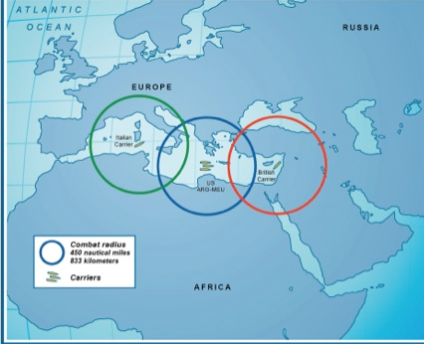
In short, the picture is not just about the platforms operating at sea; it is about how they will be able to operate in new and innovative ways moving forward in operating as a distributed itnegrated force.
This indeed is at the heart of the argument in the forthcoming book with Ed Timperlake to be published by USNI press next year.
Note: I have clearly followed the UK large deck carrier program and the UK F-35 engagement for many years.
And these new capabilities are clearly part of what enters a 2nd Fleet/JFC Norfolk world of distributed integratability.
In a recent USNI News piece, U.K. Armed Forces minister James Heappey was quoted as underscoring the synergy piece.
There is going to be a community of F-35 nations that we would be mad to ignore,” Heappey said in response to a question from USNI News. “We think that our carrier capability is something that we can develop alongside — not just the U.S. — but the Italians, the Japanese and the Australians and many others who are looking at that highly capable aircraft.”
The U.K. has already committed to exercising with the JMSDF during its summer deployment.
This week, the U.K. released its new white paper that outlines the future of its defense force and its push toward modernization of the armed forces, which emphasizes the development of new systems and the divestiture of legacy equipment.
For the Royal Navy that means decommissioning two Type 23 anti-submarine warfare frigates, and acquiring more new Type 26 and Type 31 frigates and a new support vessel, in addition to forward deploying offshore patrol vessels to take pressure off of higher-end warships.
Additionally, the MoD is expanding its maritime combat forces. “The Royal Navy will invest 40 million pounds more over the next four years to develop our Future Commando Force as part of the transformation of our amphibious forces, as well as more than 50 million pounds in converting a Bay class support ship to deliver a more agile and lethal littoral strike capability,” reads the white paper.
Heappey said the U.K. was taking a page from how the U.S. Marine Corps is reorganizing itself.
“What we’re doing with our Royal Marines is very similar to, uh, some of the innovation that the U.S. Marine Corps is developing and the strength of the relationship, not just forged for Iraq and Afghanistan. But actually over the last hundred years, [the relationship] between the USMC and the Royal Marines is so strong that I would expect to see us developing capability in all sorts of areas. Not just capability, but ideas to how an amphibious force operates in the future,” he said.
And in our interview with Rear Admiral Betton, the Deputy Commander of Allied Joint Force Command, Norfolk, he clearly underscored why this image of F-35s coming off of the ITS Cavour was significant as well.
As the former commander of the Queen Elizabeth Strike Group, Rear Admiral Betton is very familiar with the coming of the F-35 as an allied capability to Atlantic defense. The USMC has been a key partner of the UK as the Brits have stood up their F-35B capability afloat, have integrated with the British carrier in the North Atlantic and have generated with the new aircraft, new ways to integrate USMC-Naval forces.
Betton also noted that first the Italians and now the Norwegians have brought their F-35s to conduct air patrols from Iceland. Indeed, one could note that the F-35 capability operational today in the North Atlantic is indeed largely allied or put another way, the most advanced combat airpower in the region is provided by the allies.


